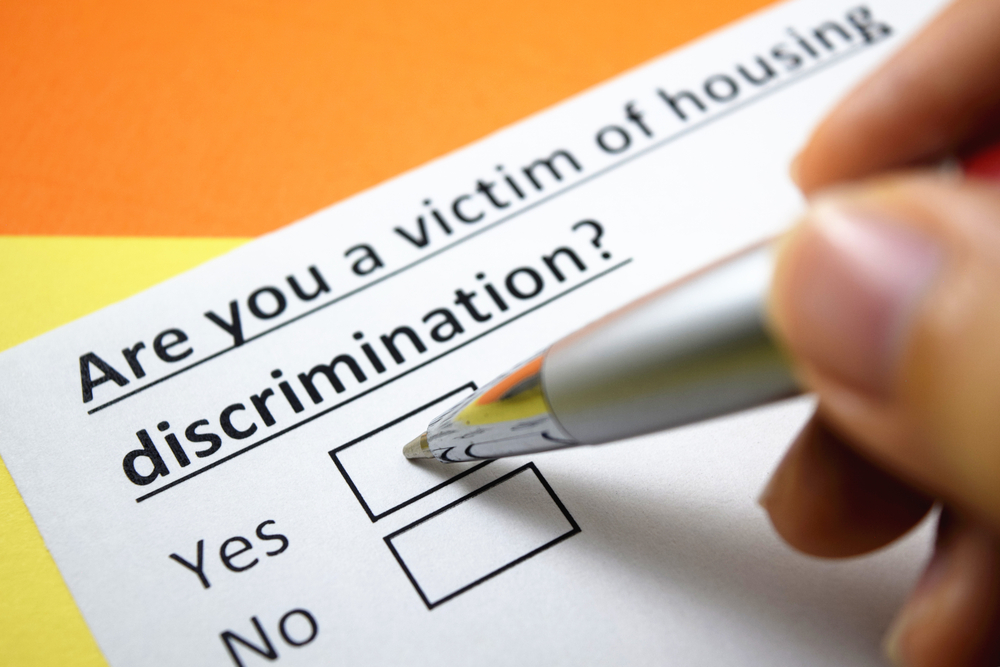During the Trump administration, federal protections against housing discrimination weakened significantly. The Department of Housing and Urban Development (HUD) rolled back key Obama-era regulations—most notably the Affirmatively Furthering Fair Housing (AFFH) rule—which was designed to proactively address segregation and systemic inequality in housing. At the same time, enforcement of the Fair Housing Act (FHA) stalled, allowing redlining, gentrification-driven displacement, and landlord discrimination to continue unchecked.
In New York State (NYS), where racial and economic inequality intersects sharply with housing access, the impact was acute. Communities of color—particularly Black and Latino renters—faced disproportionately high rates of eviction, denial of rental opportunities, and discriminatory treatment in both public and private housing markets. Against this backdrop, attorneys are essential advocates in the fight for fair, affordable, and equitable housing.
This article explores the strategic tools and legal avenues NYS attorneys can use to represent clients in housing law matters, protect tenant rights, and challenge systemic discrimination.
- Litigating Under the Fair Housing Act and NYS Human Rights Law
The Fair Housing Act prohibits discrimination based on race, color, national origin, religion, sex, familial status, or disability. NYS extends these protections to include lawful source of income, immigration status, and more.
Attorney Strategies:
- File claims under both federal and NYS law, using broader state protections to challenge subtle forms of discrimination (e.g., income screening, lease denials).
- Document discriminatory patterns, including rental refusals, disparate treatment, and coded language in advertisements.
- Use matched-pair testing evidence, often in collaboration with fair housing organizations, to reveal race-based discrimination.
- Seek both injunctive relief and damages, including emotional distress and punitive awards, especially where willful bias is clear.
- Fighting Source-of-Income Discrimination
Discrimination based on source of income—especially against renters with Section 8 vouchers or public assistance—is illegal in NYS. Yet many landlords continue to reject these tenants outright or impose illegal barriers.
Attorney Strategies:
- File source-of-income discrimination claims with the New York State Division of Human Rights or the NYC Commission on Human Rights.
- Use sting operations and tenant testers to collect evidence of systemic refusal to rent to voucher holders.
- Challenge illegal lease clauses, such as requirements for higher deposits or restrictions targeted at public benefit recipients.
- Secure emergency relief in housing court to prevent imminent homelessness due to discriminatory denial.
- Defending Tenants in Eviction Proceedings
Although the COVID-era moratoriums offered temporary protections, many tenants of color still face eviction due to rent arrears, gentrification, or retaliatory actions. These proceedings often target low-income tenants with limited legal representation.
Attorney Strategies:
- Assert defenses under New York’s Housing Stability and Tenant Protection Act (HSTPA), which limits rent increases, evictions without cause, and certain landlord tactics.
- Raise warranty of habitability and retaliatory eviction defenses, particularly when poor housing conditions or code violations are present.
- Demand discovery and jury trials in eviction cases to delay proceedings and strengthen leverage for negotiation.
- Negotiate stipulations for repayment plans, move-out terms, or sealing of eviction records to protect tenant reputations.
- Challenging Gentrification and Displacement through Land Use Law
Gentrification has displaced thousands in cities like New York, Buffalo, and Albany. Communities of color are especially vulnerable, as luxury development pushes out long-standing residents and alters neighborhood demographics.
Attorney Strategies:
- Challenge zoning changes and land use approvals that accelerate displacement, particularly in historically underserved neighborhoods.
- Advocate for community benefits agreements (CBAs) that guarantee affordable housing units, local hiring, and tenant protections.
- Use environmental justice and displacement impact studies as part of public hearings or litigation to oppose harmful developments.
- Support class action lawsuits against landlords engaged in illegal harassment or fraud to remove rent-stabilized tenants.
- Pursuing Claims for Redlining and Lending Discrimination
Although redlining was officially outlawed decades ago, its legacy persists through discriminatory mortgage lending, insurance redlining, and denial of financing to communities of color.
Attorney Strategies:
- File complaints under the FHA and Equal Credit Opportunity Act (ECOA) against lenders who deny loans or impose unfavorable terms based on race.
- Use data from the Home Mortgage Disclosure Act (HMDA) to show disparities in loan approvals and interest rates by ZIP code and demographic.
- Partner with fair housing groups to bring systemic claims against institutions engaging in modern-day redlining.
- Seek injunctive relief and damages, including financial restoration and policy reforms from violators.
- Representing Public Housing Residents Facing Harassment or Neglect
Residents of NYCHA and other public housing developments often endure neglect, health hazards, or landlord harassment with little recourse. Under Trump, HUD oversight diminished, leading to worse living conditions.
Attorney Strategies:
- File Article 78 petitions to compel NYCHA to address unsafe or unsanitary conditions.
- Bring civil rights claims under Section 1983 when tenants are targeted or neglected based on race or disability.
- Assert rights under Section 504 of the Rehabilitation Act for disabled tenants denied accommodations or repairs.
- Coordinate with tenant associations to strengthen claims, pursue class actions, or engage in organizing campaigns for change.
- Enforcing the Right to Reasonable Accommodations
Disabled tenants are often denied necessary modifications or subjected to eviction threats for behavior tied to their disability.
Attorney Strategies:
- Request accommodations formally and in writing, with medical documentation to trigger legal protections.
- File complaints under the FHA and NYS Human Rights Law if housing providers fail to respond or deny requests.
- Advocate in eviction court that failure to accommodate constitutes a defense against displacement.
- Educate tenants and providers on their rights and obligations under the law to prevent future violations.
- Protecting Tenants from Harassment and Illegal Lockouts
Landlords sometimes resort to intimidation or illegal tactics to remove tenants—especially rent-stabilized or subsidized ones.
Attorney Strategies:
- Pursue claims under NYC’s tenant anti-harassment laws, which allow tenants to seek monetary penalties and court orders.
- File for emergency relief in housing court to restore access after illegal lockouts.
- Gather digital evidence, including text messages, surveillance footage, or witness affidavits, to prove harassment.
- File criminal complaints when appropriate, as illegal lockouts may constitute a misdemeanor under NY law.
- Leveraging Local Rent Laws and Protections
New York’s rent laws were significantly strengthened in 2019. Attorneys can use these to prevent displacement and illegal rent increases.
Attorney Strategies:
- Challenge deregulation efforts by landlords seeking to remove apartments from rent stabilization through fraud or vacancy claims.
- Demand overcharge audits, especially where landlords failed to register rents or conducted unlawful renovations.
- Help tenants file for rent reductions based on building service cuts or poor conditions.
- Defend rent-controlled tenants against false claims of non-primary residence or subletting violations.
- Engaging in Policy and Community Advocacy
Attorneys must also contribute to the long-term solutions to housing injustice by pushing for stronger protections, enforcement, and affordable development.
Attorney Strategies:
- Collaborate with community-based organizations like Legal Aid, Urban Justice Center, or Housing Justice for All to support organizing and legislative campaigns.
- Testify at city council and planning board hearings about legal implications of development proposals.
- Support legislation to expand right-to-counsel, build non-market housing, and strengthen rent control.
- Publish housing rights materials and conduct multilingual know-your-rights workshops in affected neighborhoods.
Conclusion
The Trump administration’s rollback of housing protections intensified already severe inequalities in access to safe, stable housing. For communities of color in New York State, the results were higher eviction rates, increased displacement, and worsening conditions in both private and public housing.
In this context, legal advocacy is not only about defending individual tenants—it’s about dismantling the systems that perpetuate racial and economic exclusion. NYS attorneys have powerful tools at their disposal through local laws, robust fair housing statutes, and creative litigation strategies. By using them effectively, they can preserve housing stability, hold bad actors accountable, and move us closer to a truly equitable housing system.




